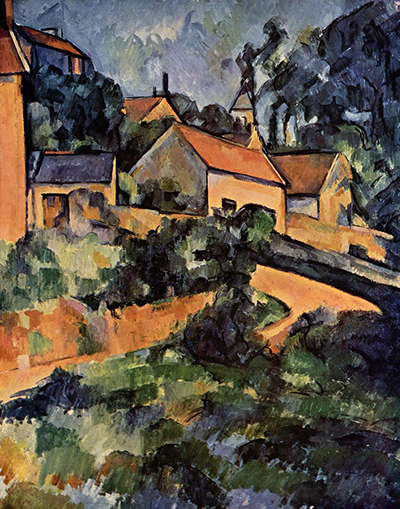In 1898, French artist Paul Cezanne completed Turning Road at Montgeroult. The dimensions of this painting are 32 x 25 7/8" (81.3 x 65.7 cm). This painting was given to the Museum of Modern Art by Mr. and Mrs. John Hay Whitney. The Museum of Modern Art is located in New York.
Cezanne painted this landscape from direct observation because he wanted to capture the realness and magnificence of the natural world as much as possible. This scene is located in the small French village of Montgeroult and it is the last painting he did in this village. The medium used for this painting is oil on canvas. The movement represented in this piece is Post-Impressionism. The colours used in this painting are ochre, green, and blue. The buildings are painted in ochre and outlined in blue. The foliage in the foreground is mostly green with some blue and there is a road that turns in the centre of the painting.
The buildings are not extravagant and they are surrounded by shrubs, trees and bushes. This is a true representation of a village in the countryside as opposed to a city. The content is simple with houses, foliage, a road, and the sky. Even though it is clear what is represented, the painting is not realistic in terms of artistic representation. There is a flattening of the space which Cezanne used quite often in his work. He achieved this by spacial distortion. Instead of relying on traditional principles of perspective, he uses scale to create the illusion of distance. The houses in the painting also overlap which along with colour helps to create depth in this scene. What is most interesting about this painting is that the space represented is flat.
This was done on purpose because Cezanne would always experiment with different styles and techniques. In this case, he reduced the houses to basic geometric shapes like rectangles and triangles. The short, rough brushstrokes were used for the green areas representing the trees and shrubs. There is also something in Turning Road at Montgeroult that is not usually seen in the natural world. There is a brown smudge next to the church steeple in the blue part of the painting. This could be done on purpose for a number of reasons, but it is unusual because brown hues are never seen in the sky. On the other hand in this painting, it helps draw the eye towards the sky.




